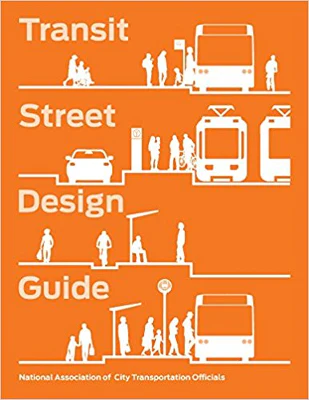
Transit Street Design Guide
As the world gets bigger and cities fill up with more companies and businesses the streets that we once designed for private transportation are now being used for transit. There is a growing problem that these streets weren’t designed to hold the vehicles of public transportation. This guide helps you put public transportation at the forefront and will help you make the necessary plans to design streets for high quality transportation. From drawings and pictures to explanations and lists of the materials needed you won’t find a better transit guide on the market.
Table of Contents
1. Introduction
Key Principles
Why Transit Streets Matter
Designing to Move People
Reliability Matters
Service Context
Transit Route Types
Transit Frequency & Volume
2. Transit Streets
Transit Street
Transit Streets Principles
Sheet Environments
Two-Way Streets
Enhanced Neighborhood Transit Street
Neighborhood Transit Street with Bike Lane
Downtown Median Transit Street
Edgefront Transit Street
Offset Bus Lane Street
Median Rapid Transit Corridor
Transit Boulevard
One-Way Streets
Shared Transit Street
One-Way Streetcar Street
Tiered Transit Street
Parallel Paired Transitways
One-Way Transit Corridor Contraflow Transit Street
3. Stations & Stops
Station & Stop Principles
Stop Design Factors
Stop Placement & Intersection Configuration
Platform Length: In-Lane Stops
Platform Length: Pull-Out Stops
Platform Height
Accessible Paths & Slopes
Universal Design Elements
Stop Configuration
Boarding Bulb Stop
Side Boarding Island Stop
Shared Cycle Track Stop
Curbside Pull-Out Stop
In-Lane Sidewalk Stop
In-Street Boarding Island Stop
Median Stop, Right-Side Boarding
Median Stop, Left-Side Boarding
On-Street Terminal
4. Station & Stop Elements
Stop Elements
Small Transit Shelter
Large Transit Shelter
Seating
Fare Vending
Passenger Information & Wayfinding
Transit Curbs
Bus Pads
Green Infrastructure
Bike Parking
Passenger Queue Management
5. Transit Lanes & Transitways
Transit Lanes
Offset Transit Lane
Curbside Transit Lane
Rail Lane, Side Running
Center Transit Lane
Peak-Only Bus Lane
Shared Bus-Bike Lane
Contraflow Transit Lane
Transitways
Center Transitway
Side Transitway
Lane Elements
Pavement Material
Green Transitway
Pavement Markings & Color
Separation Elements
Signs & Signals
Lane Design Controls
Design Vehicles
Vehicle Widths & Buffers
Design Speed
6. Intersections
Intersection Principles
Signals & Operations
Transit Signal Progression
Active Transit Signal Priority
Short Signal Cycles
Turn Restrictions
Intersection Design for Transit
Shared Transit-Right-Turn Lane
Right-Turn Pocket
Dropped Transit Lane
Queue Jump Lanes
Transit Approach Lane/Short Transit Lane
Virtual Transit Lane
Bicycle Rail Crossings
Transit Route Turns
Turn Radil
Recessed Stop Line
Transit-Only Turns
Dedicated Turn Channel
7. Transit System Strategies
Network & System Principles
Network Strategies
Transit Networks
Route Simplification
From Stops to Stations
Fares & Boarding
Pedestrian Access & Networks
Bicycle Access & Networks
System Wayfinding & brand
Performance Measures
Measure the Whole Street
8. Resources
Abbreviations
Glossary
Notes
References
Credits
